Have you ever been in two minds about somewhere? Liked and not liked a place at the same time? That’s what happened to us in Pingyao. Do you want to know why?
We purposely didn’t plan our trip to China. We wanted it to be a challenge, an adventure. We knew it would be hard to communicate; so we decided not to take any smartphones or electronic translators, just a phrasebook, pen and paper.
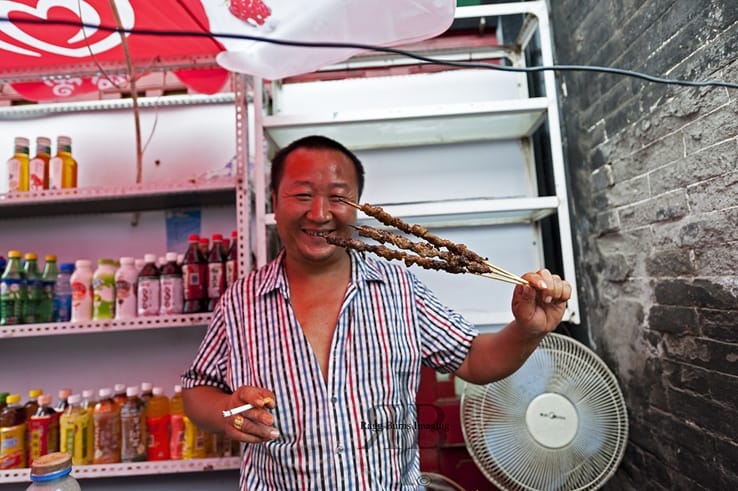
We didn’t have a guidebook and decided our itinerary day by day, following our whims, the weather and other people’s advice. We Couchsurfed and slept in stations, buses and on a Kang-style bed. Most of the times we ordered food at random, not knowing what we’d actually eat.
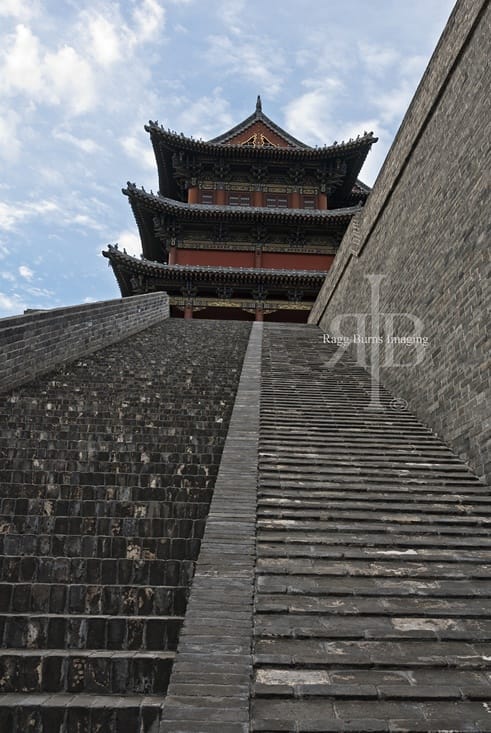
We didn’t expect to be blown away by China. Our friends didn’t like it. We loved it. The food, the sights, the people. And the challenge. But, however you put it, China makes you think. Development is running fast. Cities are born, cities die. The old is thrown away to make way for the new. Sometimes the old is preserved: but only when it brings money.
Our dear friend Luca Vasconi said, in his guest post for us “Places and heritage that can be used to spread the message of a Greater China are preserved, enhanced, sponsored for tourism and economic development.”
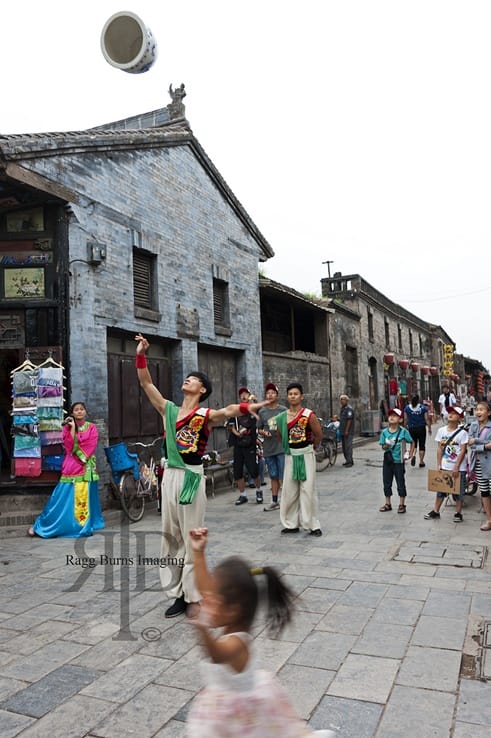
Pingyao is one of such places. History of this town in Shanxi province dates back 2.700 years; as old as Rome. It’s very well preserved, and cars are forbidden to enter the historical centre. Pingyao looks straight out of a period film; imagine old shophouses with floating eaves, Taoist temples and landscaped gardens, city walls in the shape of a turtle and an ancient market tower.

Early in the morning, shoppers and shopkeepers zip around the historic centre on bicycles laden with fruit and vegetables. By 10am, the crowd changes completely. Crowds of tourists in matching hats take over the streets, pushing and shoving to get that perfect picture on their iPads. The ancient shophouses open their doors to reveal mountains of tourist tack and fake antiquities.

Wherever you go in China, you’ll never be alone. This is definitely true in Pingyao. From 10 am to 6 pm, you can’t move. The ancient town looks like a film set. The ancient China that we’ve all pictured at some point in our minds. Real but unreal at the same time. Real, as the city walls were built in 1370, while many of the houses date back to the Qing dynasty, and are still inhabited. But it just looks fake. A theme park, where the few surviving memories of Old China to have escaped the Cultural Revolution are polished up, prettified and served on the (Western and Chinese) tourist plate.
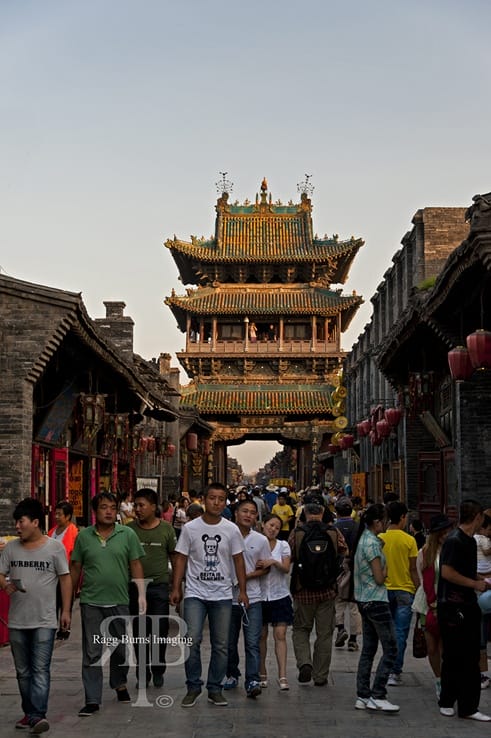
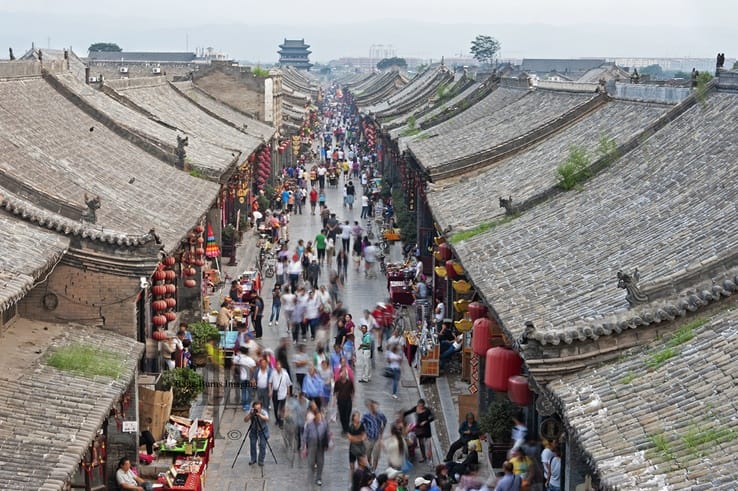
But there are still some authentic corners in Pingyao. Get out of the main thoroughfare lined with cheap shops with paper lanterns and restaurants with English-language menus, and head out to the backstreets, where men play mahjong in the street and slurp bowls of handmade cat’s ear noodles, a Shanxi delicacy. The paving stones are cracked, the paint on the walls faded. Shops sell giant vats of vinegar and sellers hawk homemade beancurd from the back of bicycles.
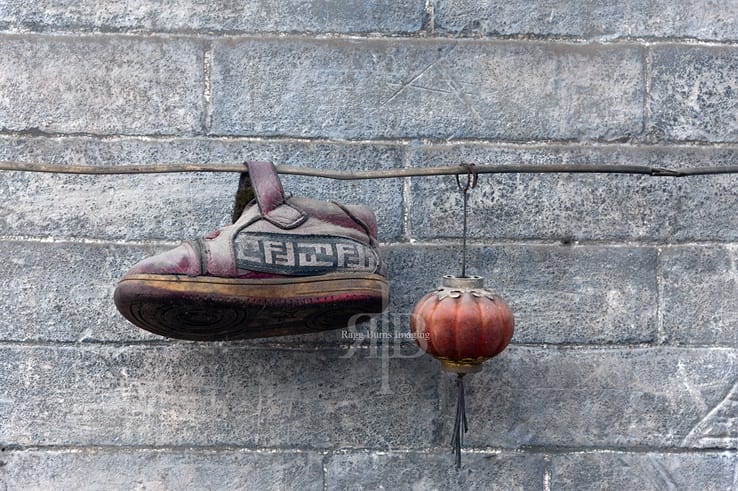
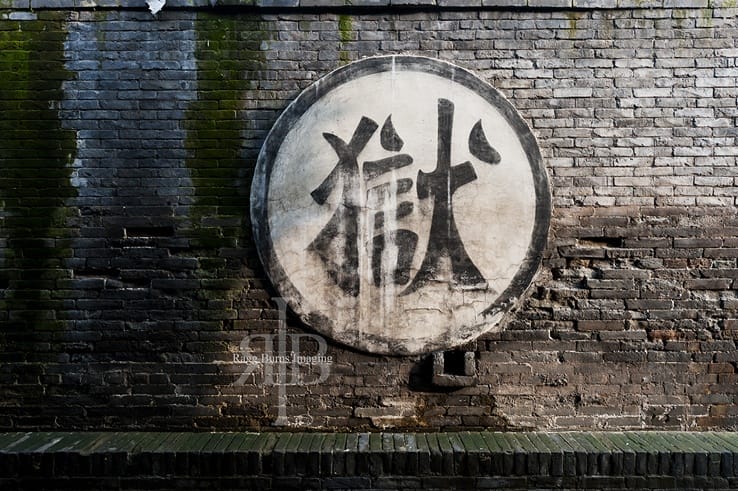
Have a good look around, because it may be gone soon.


I visited Pingyao as well, back in 2012, and I loved it! I arrived early in the morning, was at the old town around 8am so everything was still closed, not many people were around, the town was slowly waking up. It was perfect! That’s also when I wandered around the main streets. When the crowds came I hidden in the backstreets and it was amazing too! So I definitely know what you mean with this post and two faces of Pingyao!
Nice post – I’ve never previously heard of Pingyao. But it looks as I would picture traditional China (great photos). But sorry about the theme park aspect, that’s always disappointing.
You certainly did China on the rough! Looks like quite the adventure.
Frank (bbqboy)
Epic photos, guys. We agree with you guys. As well as preservation, we like a bit of faded and decay too.
I’ve really liked this post.
So interesting and honest.
China is a country with very strong contraddictions and you depicted them so well in a few lines.
And probably Pingyao is one city which is particularly emblematic from this point of view…
Thanks for being so honest. You’re not always going to travel somewhere and absolutely love it – I was in two minds about Paris (controversial lol because so many people ADORE the city). Just didn’t really do much for me and I thought it was very overhyped. These stories need to be told too though!!
Once again I love the pictures. It surely happened to me that I love and hate a place at the same time, the town of Punta Arenas down south in Patagonia for example. It’s very depressing yet when the sun began to shine the last time I was there, everything felt better right away…
There are quite a few places of like that- a great spot and totally magical until the tourists ascend. One place people talk about a lot in terms of this is Venice, so many people hate it and say its too touristy but having been there early mornings and evenings in the more local areas when the tourists disappear- it’s absolutely perfect.
Very interesting–definitely gives you something to think about. Historic sites and cities are so great, but not so much when they aren’t authentic and feel fake. I definitely want to visit China one day, but it’s lower on the list for a number of reasons. Sounds like you had a great adventure though–heading with no plans or smart phones would be a fun experience to try again!
It’s interesting how people can have such different experiences about a place. I’ve never been, but would love to visit in the near future.
Thanks Margherita for sharing your honest opinions, I always love that when reading your posts. I love that shot in particular of the view from the top of the market tower!
I know there is certainly a fine line for communities to encourage tourism yet remain their authenticity! The more we travel, the more we are seeing cities in particular losing their sense of locality. I read a post recently about Paris where it compared the stereotypes we all have with the reality and it was very much in stark contrast to what you would imagine.
And the reason behind this? Tourism! But at the same time many places struggle to survive without the income that is brought in by tourists. It’s tough and I think it’s interesting to see how different places around the world are coping with this issue.